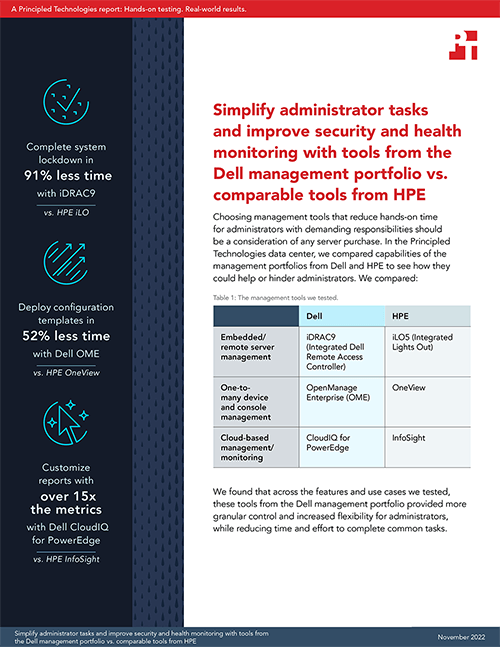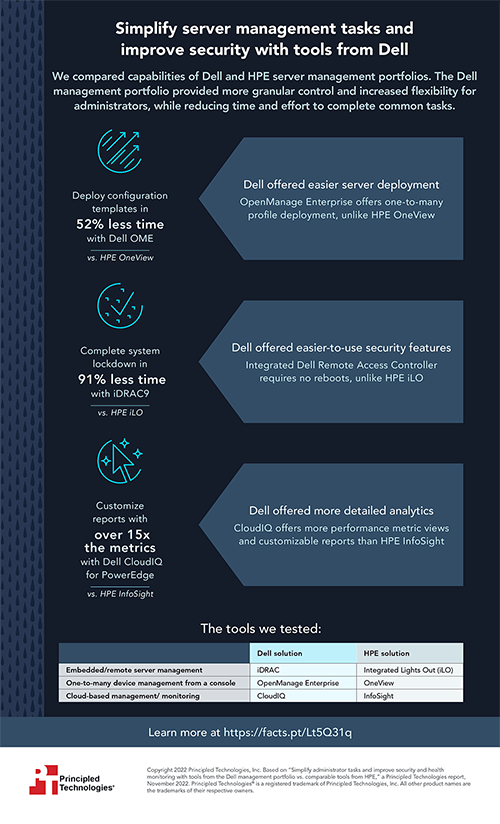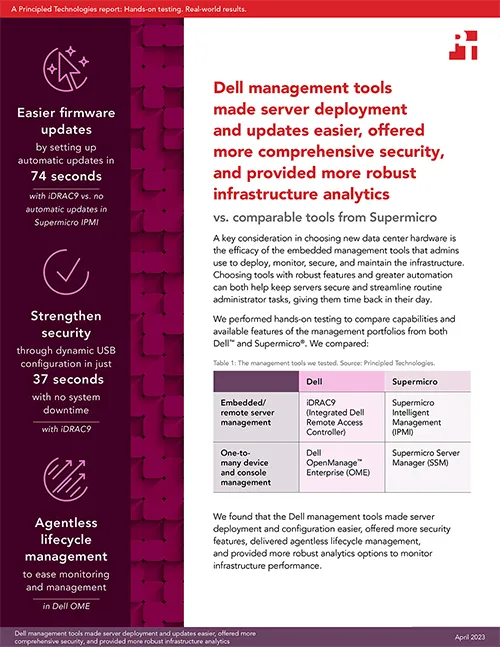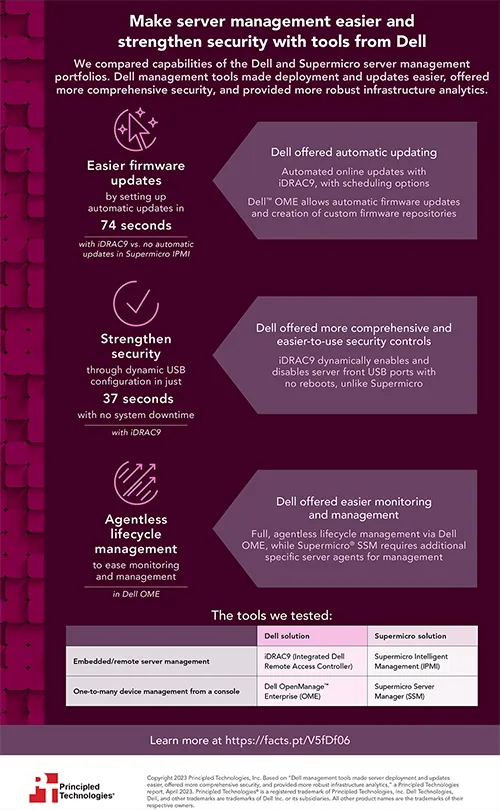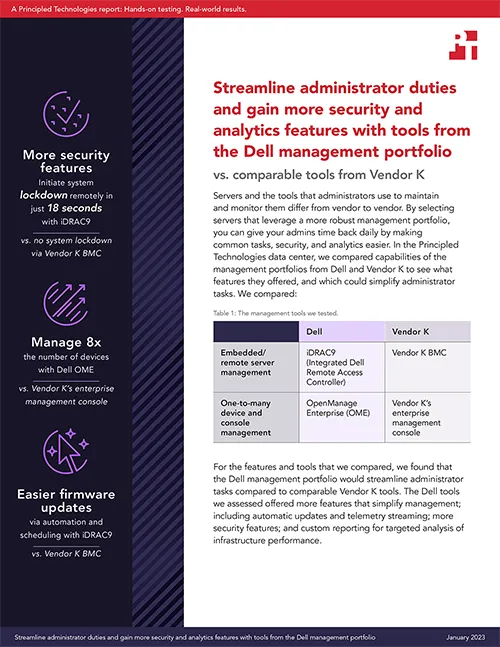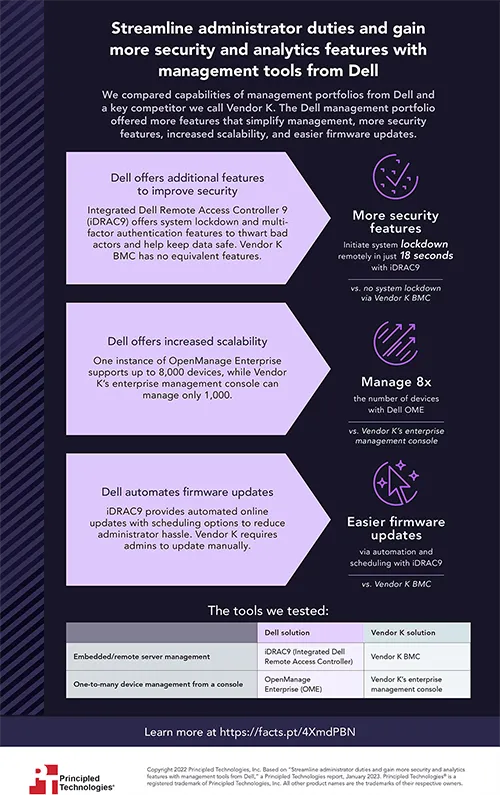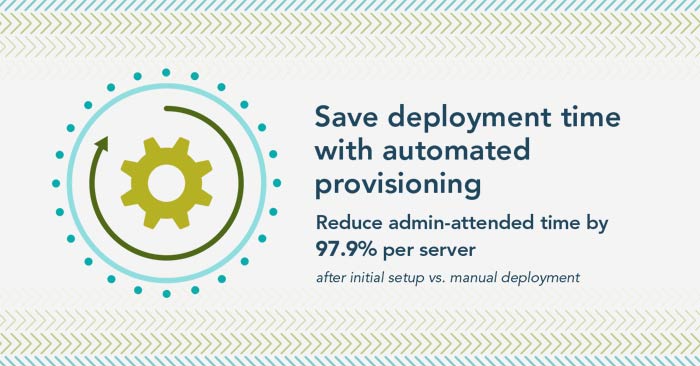
Whether you’re building a small business or a multi-billion-dollar organization, having the right set of tools is essential for success. This is especially true in the data center space, where even top-of-the-line hardware can be hindered by management software that fails to maximize potential. The right server management tools can have a significant positive impact on mission-critical performance, efficiency, adaptability, and security—helping data center admins get the best out of the hardware, minimizing administrative costs, and ultimately boosting the bottom line.
In three different studies, we compared the capabilities of a Dell server management portfolio (iDRAC9, OME, and CloudIQ for PowerEdge) with management portfolios from HPE, Supermicro, and a key competitor we called Vendor K. In each of the three cases, we conducted a head-to-head analysis of each vendor’s embedded and remote server management and one-to-many device management tools. With Dell and HPE, we also compared each platform’s cloud-based management and monitoring tools. In each comparison study, we also evaluated the number of remote management and security features available to admins, their ease-of-use, the amount of time and effort deployment and lifecycle management required, level of automation, system health monitoring tools, available analytics, scalability, and more.
In each comparison, we found that the Dell management portfolio we tested reduced necessary admin time and offered better ease-of-use and more granular control than the counterpart management portfolio. The Dell solution also included many additional features that can streamline and automate workflows, improve analytics and reporting, and bolster security. Those benefits can all contribute to an efficient, healthy, and robust data center environment that’s well-equipped to handle the challenges of growth.
For more information about our three in-depth server deployment and management comparison studies, check out the reports and infographics below.
Principled Technologies is more than a name: Those two words power all we do. Our principles are our north star, determining the way we work with you, treat our staff, and run our business. And in every area, technologies drive our business, inspire us to innovate, and remind us that new approaches are always possible.
